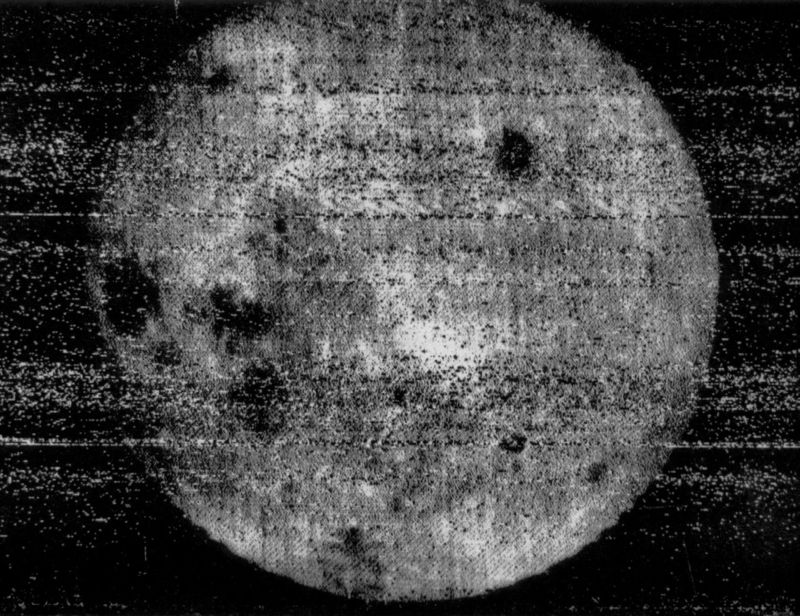
Enlarge / The first image returned by Luna 3 to Earth. (credit: Wikimedia)
To the extent that most people think about spaceflight before NASA’s Apollo program, they probably remember the flights of Yuri Gagarin or Alan Shepard, or perhaps the launch of Sputnik on this date in 1957. But between Sputnik and the first human launches, the Soviet Union flew a lunar exploration program that was remarkable for its time.
In 1959, the Soviet Luna program launched three missions that, to one degree or another, were successful. Luna 1 became the first spacecraft to enter a heliocentric orbit, Luna 2 struck the Moon, and Luna 3—quite incredibly, for the time—captured photos of the far side of the Moon and returned them to Earth. This final mission, Luna 3, launched sixty years ago today on a converted intercontinental ballistic missile from the Baikonur Cosmodrome.
To understand the magnitude of this success, recall that most satellites launched during this era failed to reach orbit successfully. At the time, the United States had only launched about half a dozen satellites into orbit around the Earth, and most of these weighed between 10 and 20kg. By October, 1959, the United States had attempted to launch four spacecraft toward the Moon. Three had not come close. One, Juno II, passed within 60,000km of the Moon in 1958.
Read 8 remaining paragraphs | Comments
Source: Ars Technica – All hail Luna 3, rightful king of 1950s space missions
